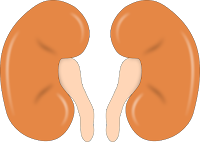humankidneycare.blogger.com
Latest diagnostic methods for diabetic kidney evaluation.
When it comes to assessing kidney complications in individuals with diabetes, doctors rely on a few key diagnostic methods. Let's take a look at them:
Urine Albumin-to-Creatinine Ratio (UACR):
This test measures the amount of albumin (a protein) in your urine compared to the amount of creatinine. It gives an indication of kidney damage. If the ratio is higher, it could mean your kidneys are being affected.
Estimated Glomerular Filtration Rate (eGFR): The eGFR test estimates how well your kidneys are functioning. It calculates the rate at which your blood is filtered through the glomeruli, which are tiny blood vessels in the kidneys. If the eGFR is lower, it might suggest that your kidney function is impaired.
Kidney Biopsy: Sometimes, doctors may perform a kidney biopsy to get a better understanding of the extent of kidney damage and the specific type of kidney disease you might have. It involves taking a small sample of kidney tissue for examination.
Imaging Techniques: Doctors might also use imaging methods like ultrasound, CT scans, or MRIs to visualize your kidneys and check for any structural abnormalities. These techniques can provide valuable insights into the condition of your kidneys.
Blood Tests: Blood tests are commonly used to evaluate kidney function. They measure levels of creatinine, blood urea nitrogen (BUN), and other markers that help determine how well your kidneys are doing.
Conclusion:
Remember, it's always best to consult with a healthcare professional or nephrologist to get the most accurate and up-to-date information about the diagnostic methods available for diabetic kidney evaluation. They will provide you with personalized guidance based on the latest advancements.






%20(1).png)
%20(1).png)
.png)
.png)
Comments
Post a Comment